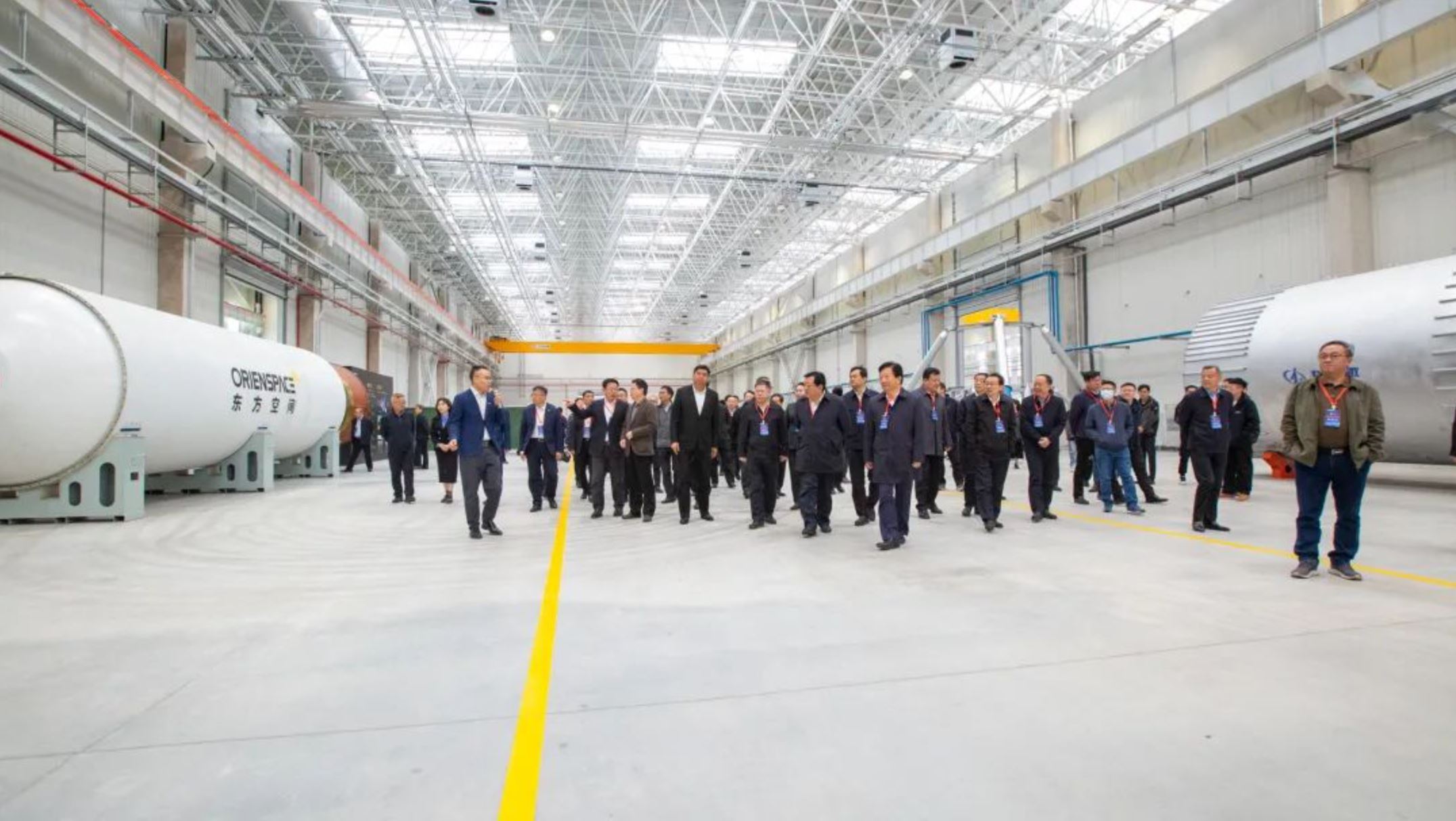Orienspace of China targets first launch in second half of the year

HELSINKI — Chinese rocket startup Orienspace is moving towards a debut launch from a sea platform in the.
The Gravity-1 rocket will launch from a mobile sea platform developed as part of sea launch facilities developed at Haiyang in Shandong province during the second half of 2023, CEO Yao Song said in a mid-April meeting with provincial government leaders. Earlier announcements point to a fourth quarter launch.
Orienspace has already secured orders for the launch of hundreds of satellites and been shortlisted in plans for a number of satellite constellations, Yao stated.
Gravity-1 consists of three solid stages and four side boosters. The rocket will have the capability to lift around 6,500 kilograms of payload to low Earth orbit (LEO), or 3,700 kilograms to 700-kilometer sun-synchronous orbit (SSO).
It will be China’s and the world’s most capable all-solid orbital launch vehicle. Gravity-1 will also have the greatest lift capacity of operational rockets in China’s budding commercial space sector so far.
Space Pioneer’s Tianlong-2—China’s first privately-operated liquid propellant rocket to reach orbit—set the current commercial record earlier this month. Tianlong-2 is capable of carrying 2,000 kilograms to LEO.
Orienspace, founded in 2020, has moved fast. Though following a pattern of first developing a solid rocket laid down by the earliest private launch startups in China, the size of the first vehicle is much greater, reflecting changes in the market and potential customers.
The company has been very active so far in 2023, including raising $47 million in funding, it announced in January. Orienspace previously raised $59.9 million last May .
Orienspace signed a contract with Changguang Satellite Technology Co. Ltd., (CGST) April 17 for the launch of a number of Jilin-1 Gaofen-05 series spacecraft. The series will be the fourth generation of remote sensing satellite for CGST, a remote sensing satellite manufacturer and operator, spun off from the Changchun Institute of Optics, Fine Mechanics and Physics under the sprawling Chinese Academy of Sciences.
Six months ago CGST announced that it planned to expand its under-construction Jilin-1 constellation from a planned total of 138 satellites to 300. The move also requires greater access to launch.
Orienspace signed a strategic cooperation agreement April 22 with Aerospace Hongtu, under Piesat Information Technology Co. Ltd. Aerospace Hongtu is building a synthetic aperture radar satellite constellation and recently saw four of its satellites reach orbit aboard a Long March 2D.
Orienspace has more ambitious plans beyond Gravity-1. Gravity-2 will have a liquid core stage and solid boosters, giving a payload capacity of 15.5 tons to LEO, 10.9 to a 500-kilometer sun-synchronous orbit (SSO), or 5.8 tons to geostationary transfer orbit (GTO). Orienspace recently tested the gas generator for its 100-ton-thrust Yuanli-85 engine for the rocket. The company is aiming for a test flight in 2025.
ORIENSPACE recently tested the gas generator of their under-development 100t-thrust-class kerolox engine Yuanli-85. pic.twitter.com/cIq1mPEfE5
— China 'N Asia Spaceflight 🚀𝕏 🛰️ (@CNSpaceflight) March 14, 2023Gravity-3 will have a center core and a similarly sized booster either side. It will be able to carry 30.6 tons to LEO, or 8 tons to lunar transfer orbit, according to the company. The kerosene-liquid oxygen core stages will also be reusable. The inaugural launch is currently slated for 2027.
More immediately, Orienspace’s Medium and Large-scale Launch Vehicle Assembly Integration Test Center is expected to come online mid-year. It will eventually be capable of producing a total of 20 medium and large launch vehicles per year. Gravity-1 is one of a number of commercial launchers set to fly this year. Commercial launch providers could potentially add more than 20 launches year. These add to plans by the country’s main contractor to launch more than 60 times this year.
Related
ncG1vNJzZmiroJawprrEsKpnm5%2BifLC%2ByJ6lrKiRmLJuu8VmmqGhnpZ6ta3RoJytq12btrO%2F02ajmq2emLVutc1mqp6bn6OxbrTApZ1mp5ZiwamxjLKcmqpf